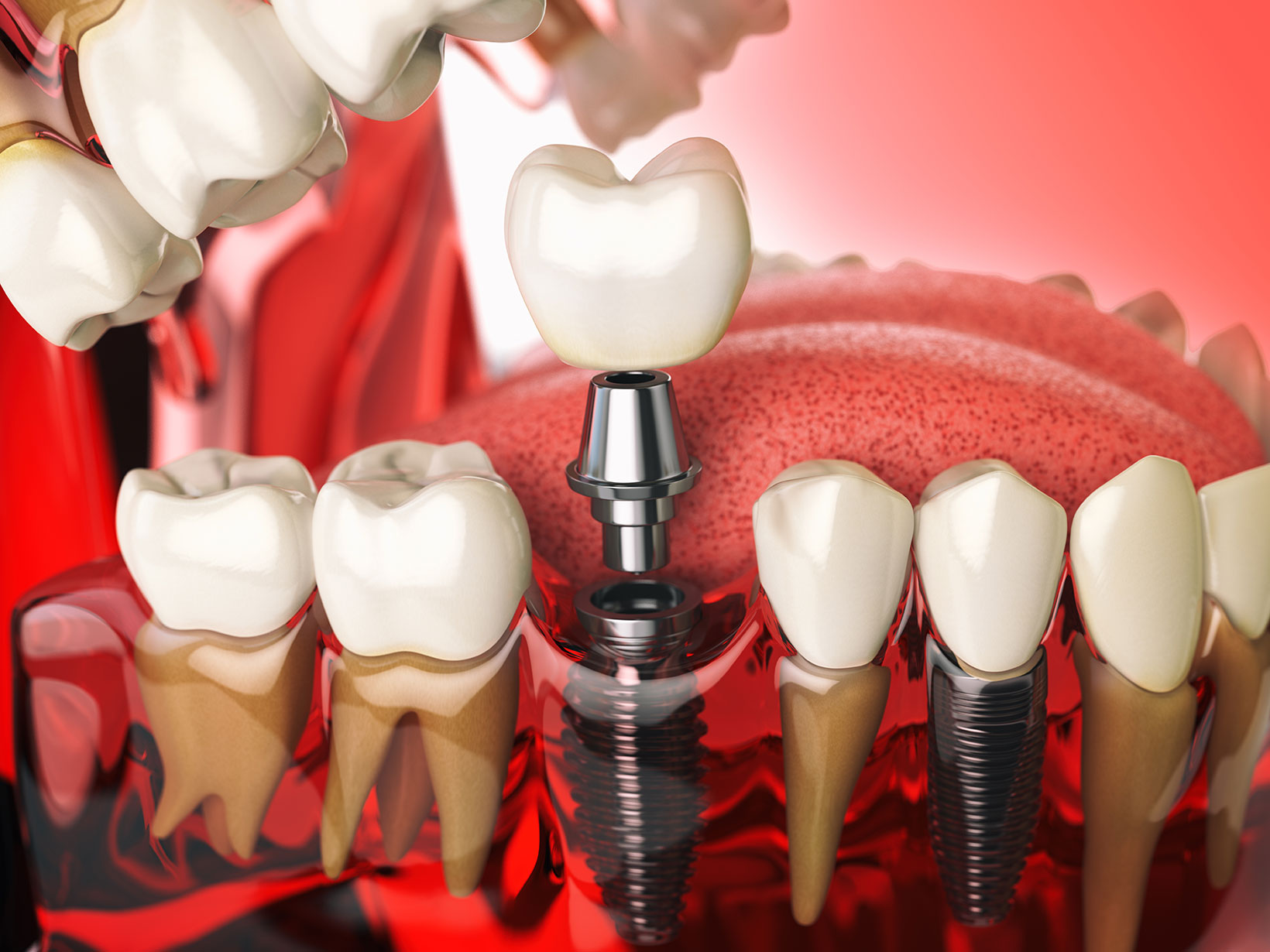Dental implants have become one of the most trusted ways to replace missing teeth. They provide a stable, long-lasting solution that looks and feels very natural. But patients may not realize there are two main types of implants used in dentistry: traditional dental implants and mini dental implants. While they are both designed to help replace missing teeth, they differ in size, cost, and the situations where dentists recommend them.
Understanding these differences can help patients feel confident when discussing treatment with their dentist.
What is a Dental Implant?
A dental implant is a small, screw-shaped post usually made of titanium. The dentist surgically places this post into the jawbone, where it acts like an artificial tooth root. Over time, the bone fuses with the implant in a process called osseointegration, which gives the implant strength and stability. This takes about 3-6 months. During the healing stage, the post stays hidden under the gum. In some cases, the dentist covers the post with a temporary crown for appearance and function.
Once the implant heals, the dentist attaches an abutment that connects the implant to a crown or bridge. This system creates a tooth replacement that looks and works much like a natural one. Implants can also be used to hold removable dentures in place.
Traditional implants are considered the gold standard for tooth replacement because they are strong, durable, and can last for decades when cared for properly.
What is a Mini Dental Implant?
As their name suggests, mini dental implants are smaller than regular implants. A mini dental implant is usually less than half the size of a standard implant. Instead of being placed in two stages, mini implants are usually inserted in a single dental visit. They have a one-piece design, with a ball-shaped end that sticks out of the gum to hold a crown, bridge, or denture.
Mini implants are often used for patients who have bone loss in their jaw bone and may not have enough bone to support a full-size implant, or for those looking for a less invasive and more affordable option. Typically, mini dental implants are about half the cost of traditional implants, and they last about half as long.
Implant vs. Mini Implant: Key Differences
Although both dental implant options restore missing teeth, there are important differences in structure, stability, healing, and cost that patients can discuss with their dentist.
- Size and structure
- Implants: Typically 3.5 to 6 millimeters wide. They are placed in two pieces (the implant and the abutment).
- Mini implants: About 2 to 3 millimeters wide. They are a single piece with a ball top for attachments.
- Placement procedure
- Implants: Require surgery to insert the post, followed by a healing period before placing the crown. Sometimes bone grafting is needed if the jawbone is too thin.
- Mini implants: Can often be placed in one appointment, without the need for stitches or bone grafting. They are less invasive.
- Stability and strength
- Implants: Provide excellent stability and can handle the full bite force of chewing. They are ideal for single tooth replacements, bridges, and full-mouth restorations.
- Mini implants: Less stable due to their small size. They work well for holding dentures in place but may not be the best choice for high-bite-force areas.
- Healing time
- Implants: Healing may take several months as the bone fuses to the implant.
- Mini implants: Often ready for use the same day or within a few weeks.
- Cost
- Implants: $1500 – $6000 for one tooth. Generally more expensive because of their size, the multi-step process, and possible need for bone grafting.
- Mini implants: $500 – $1,500 for one tooth. Cost less since they are smaller and require fewer procedures.
- Longevity
- Implants: Can last 20 years or more with good care.
- Mini implants: May not last as long, often 7–10 years, especially under heavy chewing forces.

The Best Dental Implant Type for You
Your dentist will consider several factors before recommending a standard or mini implant:
- Bone density and volume: Standard implants require enough strong bone for support. If bone is thin, bone grafting may be needed. Mini implants can be a good option for patients who wish to avoid bone grafting.
- Number of missing teeth: Standard implants are often preferred for single or multiple missing teeth. Mini implants are more common for stabilizing dentures.
- Patient health: Healing ability, gum health, and medical conditions may affect implant choice.
- Budget: Mini implants are generally less expensive than traditional implants.
- How long it lasts: Patients who want a solution that can stay strong for many years may do better with standard implants.
The dentist will likely recommend traditional implants for patients with healthy bone structure, who want a long-term solution for missing teeth, and are willing to invest in a permanent option.
Mini implants can be a good option for patients with less bone available and who want a faster or more affordable option. They are often recommended for securing dentures.


